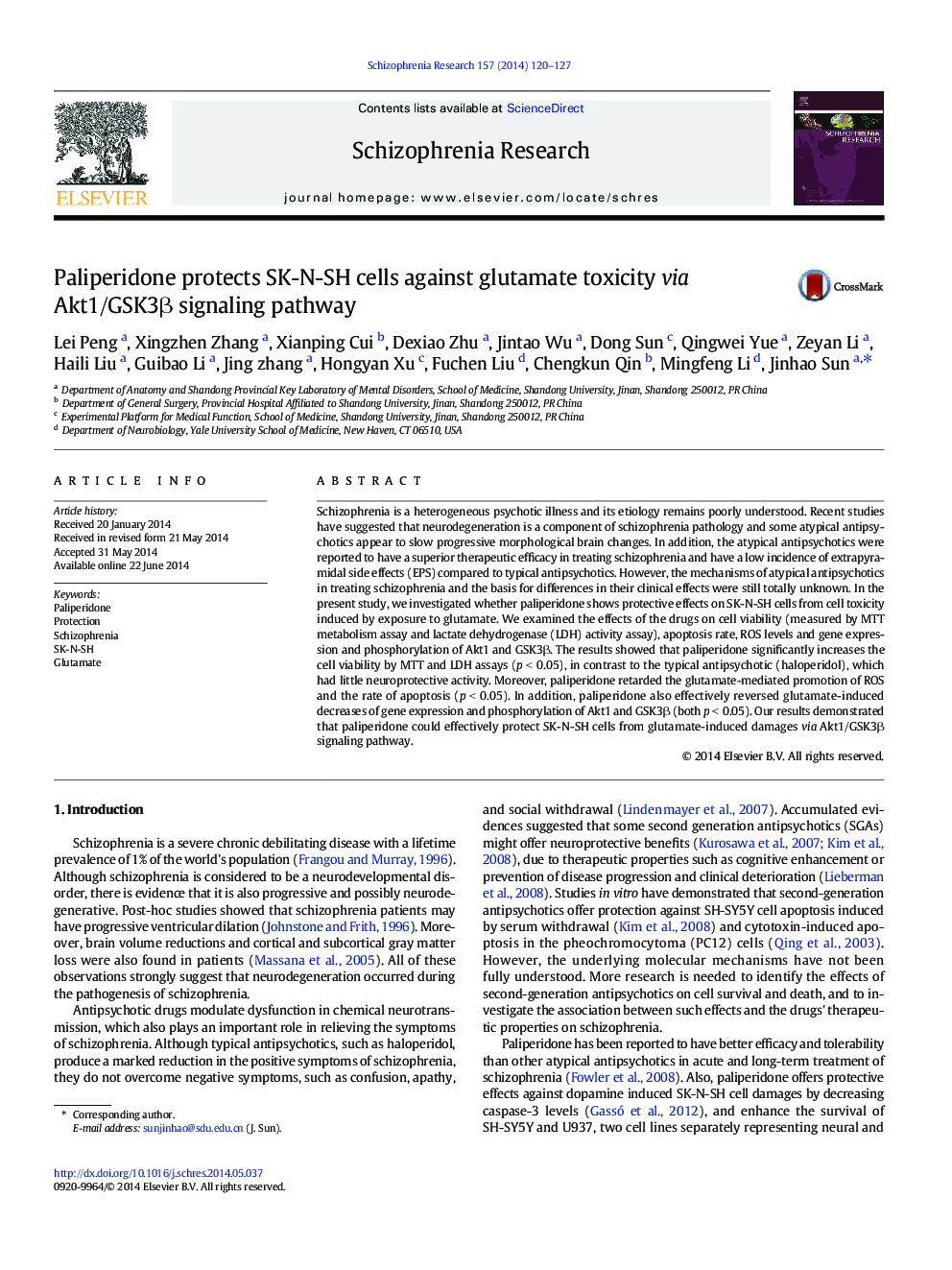| Article ID | Journal | Published Year | Pages | File Type |
|---|---|---|---|---|
| 6825071 | Schizophrenia Research | 2014 | 8 Pages |
Abstract
Schizophrenia is a heterogeneous psychotic illness and its etiology remains poorly understood. Recent studies have suggested that neurodegeneration is a component of schizophrenia pathology and some atypical antipsychotics appear to slow progressive morphological brain changes. In addition, the atypical antipsychotics were reported to have a superior therapeutic efficacy in treating schizophrenia and have a low incidence of extrapyramidal side effects (EPS) compared to typical antipsychotics. However, the mechanisms of atypical antipsychotics in treating schizophrenia and the basis for differences in their clinical effects were still totally unknown. In the present study, we investigated whether paliperidone shows protective effects on SK-N-SH cells from cell toxicity induced by exposure to glutamate. We examined the effects of the drugs on cell viability (measured by MTT metabolism assay and lactate dehydrogenase (LDH) activity assay), apoptosis rate, ROS levels and gene expression and phosphorylation of Akt1 and GSK3β. The results showed that paliperidone significantly increases the cell viability by MTT and LDH assays (p < 0.05), in contrast to the typical antipsychotic (haloperidol), which had little neuroprotective activity. Moreover, paliperidone retarded the glutamate-mediated promotion of ROS and the rate of apoptosis (p < 0.05). In addition, paliperidone also effectively reversed glutamate-induced decreases of gene expression and phosphorylation of Akt1 and GSK3β (both p < 0.05). Our results demonstrated that paliperidone could effectively protect SK-N-SH cells from glutamate-induced damages via Akt1/GSK3β signaling pathway.
Related Topics
Life Sciences
Neuroscience
Behavioral Neuroscience
Authors
Lei Peng, Xingzhen Zhang, Xianping Cui, Dexiao Zhu, Jintao Wu, Dong Sun, Qingwei Yue, Zeyan Li, Haili Liu, Guibao Li, Jing zhang, Hongyan Xu, Fuchen Liu, Chengkun Qin, Mingfeng Li, Jinhao Sun,
